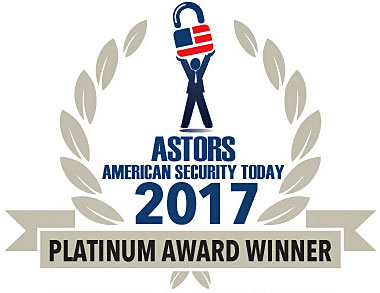
In the early hours of October 29, 2017, over 200 first responders participated in a critical incident exercise and technology assessment conducted by DHS’ Science and Technology Directorate (S&T) in partnership with the New York Police Department (NYPD), the New York Fire Department (FDNY), and the Metropolitan Transportation Authority (MTA).
Over the course of the exercise, the agencies tested and evaluated not only tactics, techniques and procedures, but also the efficacy of emergent relevant technologies.
“The recent school shootings in Kentucky and Texas, and October’s horrific Las Vegas shooting are painful reminders of the importance to be prepared in the event of such terrible critical incidents,” explained S&T Undersecretary William Bryan.
“This exercise could not be more relevant to our efforts to protect the safety of the American people.”
“S&T has been involved in similar exercises and technology assessments since 2013.”
First responders participate in such exercises to improve tactics, address capability gaps, and because of the need and desire to do things better.
“We hope to incorporate several new tactics from lessons learned from this exercise such as training on an interagency communication channel,” added Lieutenant Arthur Mogil from NYPD.
In addition to evaluating technologies, “we reinforced the response of our relatively newly formed joint agency unit, the Rescue Task Force, which requires different NYPD units to work together with the FDNY to perform security and life safety operations.”
The exercise took place at the Grand Central Terminal in New York City, with most of the action occurring on parked trains and on track platforms, and other indoor spaces within the Terminal.
Emergency medical technicians (EMTs) were dispatched to quickly convert ramps in front of several track platforms into triage stations.
Outside, first responders set up an incident command post and an operations center to coordinate the simulated response.
Just prior to the exercise, each of the featured technologies was on display for VIPs and observers; representatives explained how the devices and software work in preparedness and response operations for active shooter and other critical incidents.
(Learn More. One of the technologies utilized was the Android Team Awareness Kit (ATAK), a GPS communications tool that runs on a mobile device, improving situational awareness by allowing users to know where their mission partners are located, regardless of affiliation. It also improves communications through a variety of applications. ATAK was funded and developed by DOD. Courtesy of DHS S&T and YouTube)
S&T’s National Urban Security Technology Laboratory (NUSTL) had overall responsibility for technology selection, assessment, and reporting oversight.

A 2017 ‘ASTORS’ Homeland Security Program’s ‘Excellence in Homeland Security’ recipient, the DHS S&T Homeland Security Advanced Research Projects Agency (HARPSA), provided technical, program and administrative support of the exercise.
The exercise closed following an in-depth after-action discussion with key participants and S&T’s Homeland Security Operational Analysis Center (HSOAC).
Additionally, the U.S. Army Armament Research, Development and Engineering Center installed 20 cameras throughout the path of the exercise and also used mobile cameras carried by videographers to cover all areas of movement.
The video live streamed to the VIP Room on a video wall in Grand Central Terminal’s Vanderbilt Hall.
S&T installed four more cameras in the exercise path for its social media analysis tool.
Later, HSOAC and S&T’s Behavioral, Economic, and Social Science Engine (BESS-E) analyzed the footage to evaluate technology performance.
“Planning for this exercise began eight months before the exercise and was not a direct response to Las Vegas,” said Bryan.
This was the eighth exercise S&T planned and coordinated to support technology demonstrations and evaluations.
The previous seven were held in New Jersey, New York and Massachusetts over the past four years.

The settings included a variety of locations, including schools, a movie theater, a synagogue, a subway station, a college, and a Major League Baseball stadium.
In each exercise different scenarios were acted out, each with a different number of simulated shooters, explosive devices, hostage situations, presence of chemical or biological weapons, and more.
“S&T saw these exercises as a unique opportunity to try out relevant existing and emergent technologies to see what kind of an impact they have on first responders’ preparedness and response,” said Lawrence Ruth, director at NUSTL’s Test and Evaluation Division.
According to Ruth, the technology selection was based on the needs expressed by first responder agencies, and choosing relevant technologies from S&T and those offered by private industry.
“Following the event, S&T will produce an After Action Report that provides a detailed assessment of the impact the technologies have made on the efficacy of the first responders during an active shooter scenario,” said Ruth.
HSOAC and S&T’s BESS-E will develop the report under NUSTL’s oversight.
In the exercises to date, technologies were assessed to determine effectiveness for law enforcement and other responders, and how well they fit into first responder operations.
These exercises are representative of incidents such as an active shooter event and help the first responder community evaluate their preparedness and response.

“S&T provides expert technical assistance to first responders for the development and execution of training and exercises, and assessment of equipment performance,” said Lt. Mogil.
“We know that having the right technology in the hands of a first responder can save critical minutes or seconds, and reduce injuries and save lives,” said Bryan.
The needs of responders and the public are at the center of every decision we make.”
To learn about how to respond in the event of an active shooter visit: https://www.dhs.gov/active-shooter-preparedness.
Here are a number of the technologies which were assessed during this most recent exercise:
-
Android Team Awareness Kit (ATAK)
- Smartphone mapping app used for sharing video, audio, and other information that enables a common operating picture and improved situational awareness for incident commanders.
- Plug-in architecture allows needed functionality to be added.
- (Funded and developed by DOD)
-
MOLE
- Footwear-worn position tracker designed to work in buildings and other GPS-denied environments that is integrated with ATAK and Wireless Data Network.
- MOLE enables a common operating picture for incident commanders.
- (Developed by S&T and Robotic Research)
-
Wireless Data Network
- Wireless network to support audio/video that provides a wireless feed of the live video from the exercise to Command and Control Centers, VIP locations, or to any Emergency Operations Center;
- also provides tactical meshed network and portable radios that enable first responders to wirelessly exchange and update each other’s indoor location using ATAK.
- (Developed by Persistent Systems Inc.)
-
FLING Patient Tracker
- Smartphone based patient tracking system in which patients are identified largely through their photos from initial triage to evacuation to treatment at hospitals, assisting both with medical treatment and locating the whereabouts of patients for their families.
- (Developed by Emergency Services Group International)
-
TacID Mobile
- Smartphone/laptop app for comparing facial photos with face image libraries; suitable for pre-event security and real-time response – can identify suspects by scanning victims against watch lists.
- (Developed by Ideal Innovations Inc.)
-
NEON Personnel Tracker
- 3-D personnel tracking and mapping that can operate in GPS-denied environments to enable a common operating picture for incident commanders.
- (Initially developed by S&T and advanced by TRX Systems)
-
Social Media Analysis Tool
- Monitors various social media platforms to aid in preparedness for and response to an incident so that incident commanders can monitor social messaging in real time during the exercise.
-
Crowd Evacuation Modeling and Simulation Software
- Software which helps visualize and understand complexities of evacuating large numbers of people from venues, was exhibited at the event prior to the exercise.
- (Provided by DHS S&T)
The 2017 ‘ASTORS’ Homeland Security Awards Program
 The U.S. Department of Homeland Security Science (DHS) and Technology Directorate (S&T) was recognized with four ‘ASTORS’ ‘Excellence in Homeland Security’ Platinum Awards by American Security Today (AST), at the ISC East Conference in New York City to honor organizations that are actively addressing today’s evolving Homeland Security challenges in innovative ways.
The U.S. Department of Homeland Security Science (DHS) and Technology Directorate (S&T) was recognized with four ‘ASTORS’ ‘Excellence in Homeland Security’ Platinum Awards by American Security Today (AST), at the ISC East Conference in New York City to honor organizations that are actively addressing today’s evolving Homeland Security challenges in innovative ways.
This awards program was organized by AST to recognize the most distinguished security vendors, as the nation continues to respond to escalating threats from home and abroad.
The innovative solutions being implemented to meet those threats has led to tremendous growth in the field of Homeland Security, and to this awards program for recognition of the key contributors to our nation’s security.
-
Department of Homeland Security (DHS) Science and Technology Directorate (S&T)
- Enhanced Dynamic Geo-Social Environ (EDGE) Virtual Online Training for First Responders Open at No Cost to All U.S. First Responders Agencies, Across Disciplines for Coordinated Response to Critical Incidents
- Excellence in Homeland Security
-
Department of Homeland Security (DHS) Science and Technology Directorate (S&T)
- Resilient Tunnel Plug (RTP) to Strengthen Mass Transportation Critical Infrastructure from Disruptive Flood Events
- Excellence in Homeland Security
-
Department of Homeland Security (DHS) Science and Technology Directorate (S&T) First Responders Group (FRG)
- Flood Apex Program, Applying New & Emerging Technologies to Improve Community Resilience from Flood Disasters, Reduce Fatalities and Property Loss
- Excellence in Homeland Security
-
Department of Homeland Security (DHS) Science and Technology Directorate (S&T) Homeland Security Advanced Research Projects (HSARPA)
- Surface Transportation Explosives Threat Detection (STETD) on Developing the Capacity to Detect Potential Threat Items Throughout Rail and Subway Systems Without Alerting the Subject or Negatively Impacting the Speed of Travel
- Excellence in Homeland Security
Over 100 security professionals gathered from across North America and the Middle East to be honored from disciplines across the Security Industry in their respective fields which included:
- The Department of Homeland Security
- The Department of Justice
- The Security Exchange Commission
- State and Municipal Law Enforcement Agencies, and
- Leaders in Private Security
Recognized for their Innovative Training and Education Programs, Outstanding Product Development Achievements and Exciting New Technologies to address the growing Homeland Security Threats our Nation is facing.

American Security Today was formed after careful reflection of 9/11 and its aftermath when the Department of Homeland Security was established and there was an immediate explosion of new products and solutions for what was perceived as an imminent second attack on primary targets in the United States.
As time moved forward from 9/11 itself and in recent years, the threats to our nation have evolved from a large scale 9/11 type attack to:
- Domestic and International Terrorist Attacks carried out by ‘lone wolves’ and coordinated individuals
- Cybersecurity breach attacks against our government agencies, financial institutions and critical infrastructure facilities
- Unprecedented urban violence
- Cultural shifts and societal media bias, which make it increasingly difficult to secure our nation in this constantly evolving threat environment.

These current circumstances have put forward another rapid expansion of new ideas, products and solutions to combat these ever changing challenges.
These changes have called for a new generation of security experts in the Homeland Security and Public Safety fields who need real time knowledge of our ever growing threats.
These experts include the Government at the Federal, State and Local levels as well as from Private Firms specializing in Physical Security, Port Security, Law Enforcement, First Responders, Military and Private Security responsible for implementing coordinated security measures to ensure our Nation’s Security and improve Public Safety.
Together, each of these entities work together seamlessly on the front lines of protecting our communities, to ‘Keep our Nation Secure, One City at a Time.’



















